Carson Mansion
The Crown Jewel of Victorian Architecture
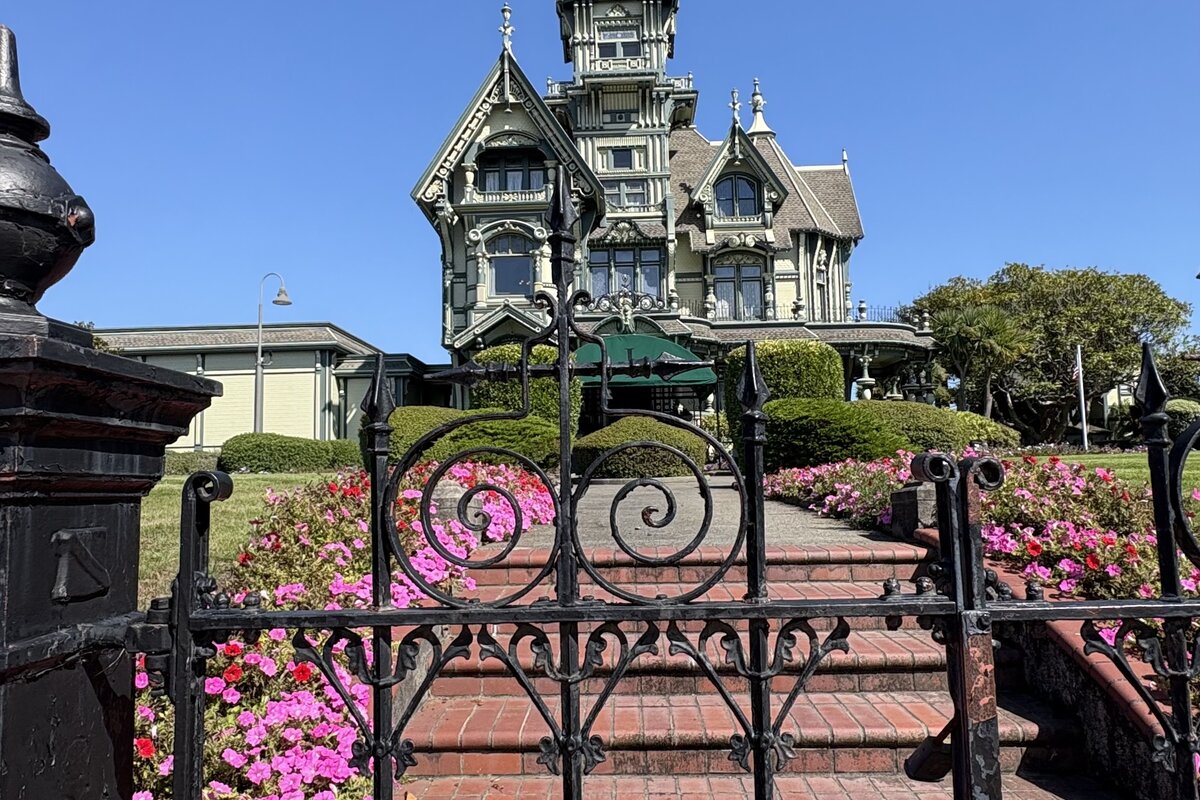
The Carson Mansion stands as one of the most photographed Victorian houses in America and has been called “the most grand Victorian home in America.” Built between 1884 and 1886 by lumber baron William Carson, this architectural masterpiece showcases the wealth and craftsmanship of Eureka’s lumber boom era. Located at 143 M Street in Old Town Eureka, this extraordinary residence represents the pinnacle of American Victorian domestic architecture.
Architectural Marvel
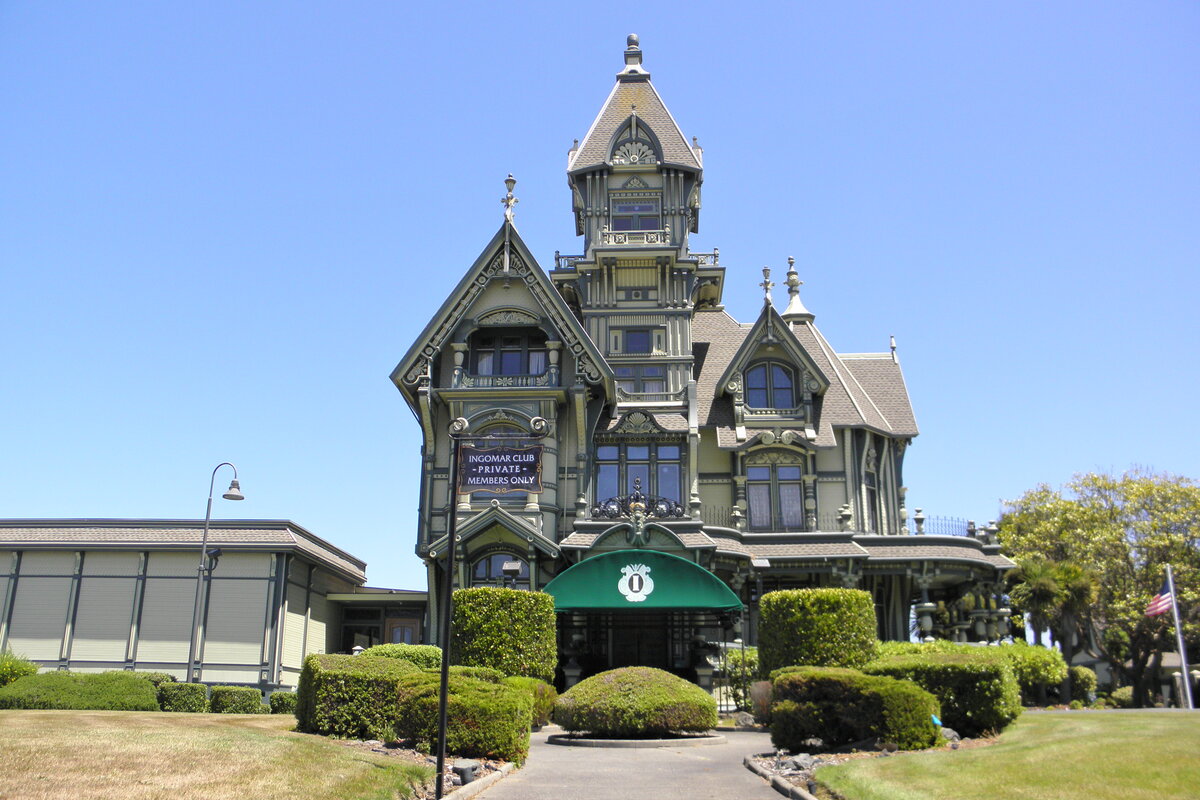
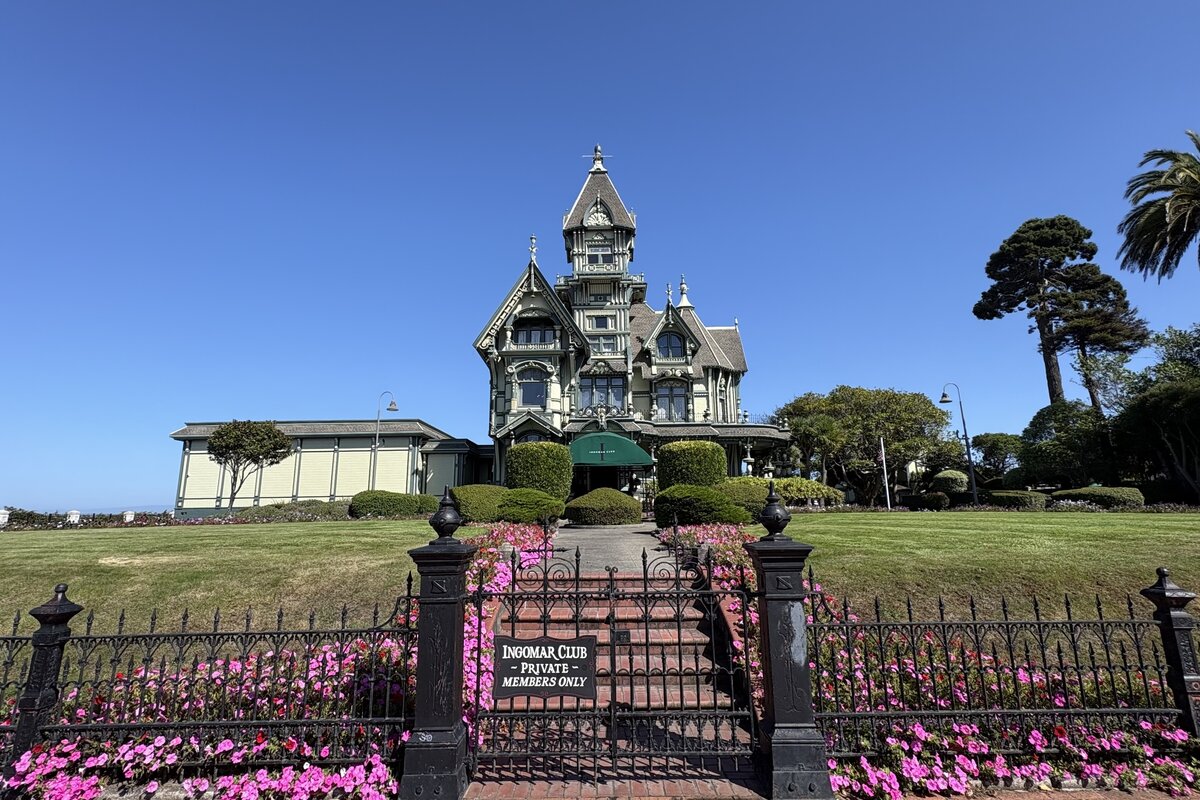
This magnificent structure showcases an eclectic blend of Victorian architectural styles, described as “peculiarly American” in its unique combination of elements:
Architectural Details:
- Size: Over 16,200 square feet with 18 rooms
- Height: Features a soaring 103-foot tower
- Styles: Masterful blend of Queen Anne, Eastlake, Italianate, and Stick architectural styles
- Materials: Concrete foundation with Douglas Fir frame and Redwood exterior
- Design: Multiple towers, turrets, and gables with elaborate gingerbread trim
- Craftsmanship: Intricate woodwork crafted from redwood and imported hardwoods
Architects: Designed by the renowned Newsom Brothers (Samuel Newsom and Joseph Cather Newsom), who were celebrated for their innovative Victorian designs throughout California.
Historical Significance
William Coleman Carson arrived in California from New Brunswick, Canada in 1849 during the Gold Rush era. He became one of Eureka’s most successful lumber entrepreneurs, co-founding the Dolbeer and Carson Lumber Company, which became a dominant force in the Pacific Northwest timber industry.
Construction Story: The mansion was built at an extraordinary cost of $80,000 (equivalent to approximately $2.8 million in 2024). During a economic slump in the lumber industry, Carson kept his skilled workers employed by commissioning them to build this remarkable residence—a testament to both his business acumen and commitment to his workforce.
Timeline:
- 1884-1886: Construction period
- 1886-1950: Carson family residence
- 1950-Present: Home to the private Ingomar Club
Cultural Impact: The mansion has been documented in the Historic American Buildings Survey since 1964 and is frequently used in artwork and as a model for Victorian architecture studies. Its iconic silhouette has become synonymous with American Victorian grandeur.
Visiting the Carson Mansion
Location: 143 M Street, Old Town Eureka, California Current Status: Private property, owned and occupied by the Ingomar Club since 1950
Public Access: While the mansion’s interior is not open to public tours, the exterior can be viewed and photographed from public areas. The mansion’s dramatic architecture and intricate details are best appreciated from the street level.
Best Viewing Locations:
- Primary viewpoint: Across the street at 2nd and M Streets intersection
- Side perspectives: Walk along M Street for different architectural angles
- Context views: Steps back on 2nd Street to capture the mansion with surrounding Victorian homes
Visitor Etiquette: Please remember this is a private residence and club. View respectfully from public areas only and be mindful of current occupants’ privacy.
Architectural Legacy
The Carson Mansion represents more than just a beautiful building—it stands as a symbol of American prosperity and craftsmanship during the Victorian era. Its eclectic architectural style, combining multiple Victorian movements into one cohesive design, exemplifies the creative freedom and bold experimentation that characterized American architecture in the late 19th century.
Why It Matters:
- Architectural Innovation: The mansion demonstrates how American architects adapted and combined European Victorian styles to create something distinctly American
- Preservation Success: Continuous private ownership has ensured remarkable preservation of original details and craftsmanship
- Educational Value: Serves as a living textbook of Victorian architectural techniques and materials
- Cultural Symbol: Has inspired countless artists, photographers, and architects studying American Victorian design
Photography Tips
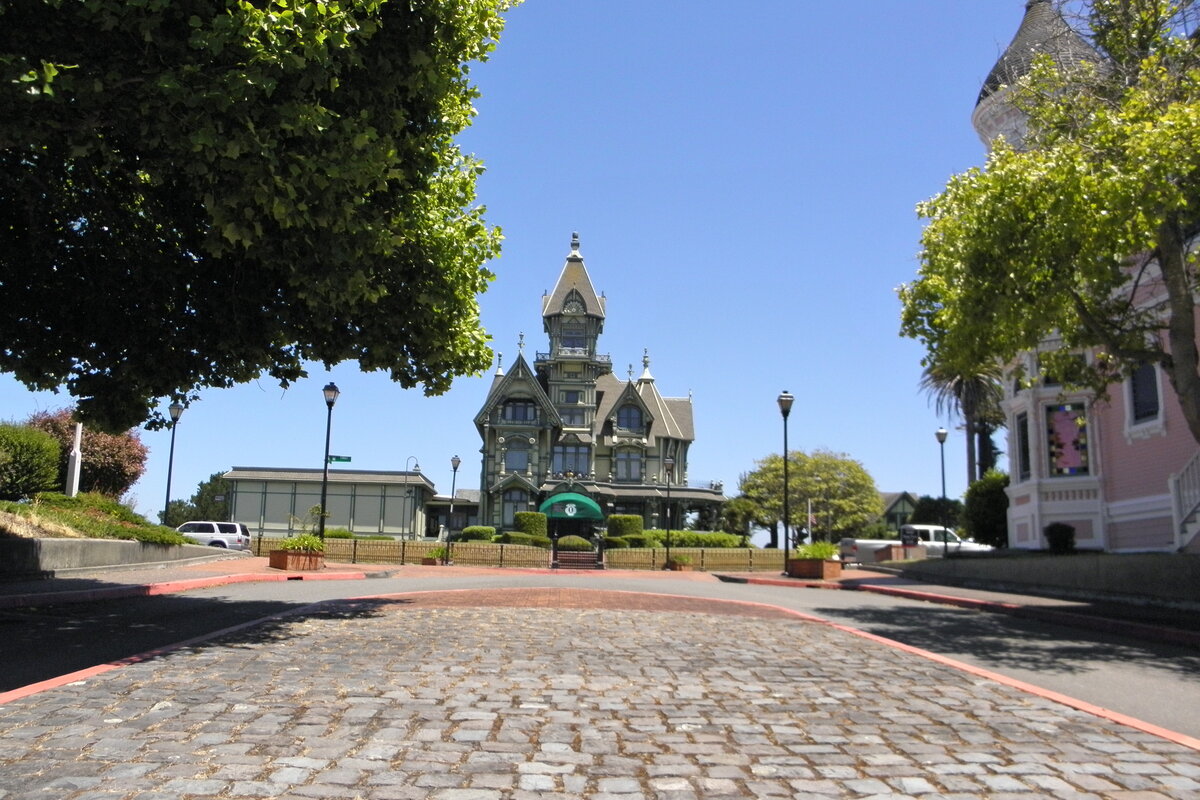
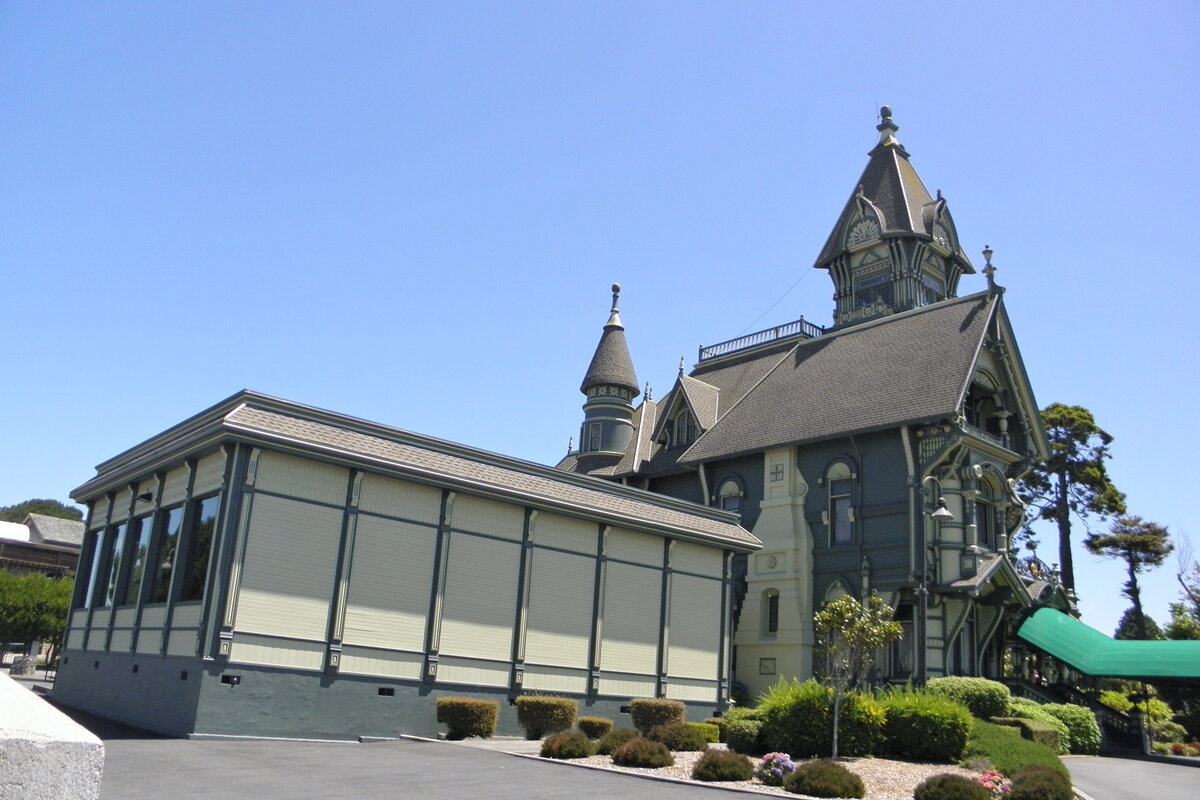
- Best lighting for photos is in the morning or late afternoon
- The mansion is particularly striking when lit at night
- Consider different angles from the surrounding streets for unique perspectives
- Focus on intricate details like gingerbread trim and decorative elements
- Wide shots capture the mansion’s impressive scale and surrounding landscape